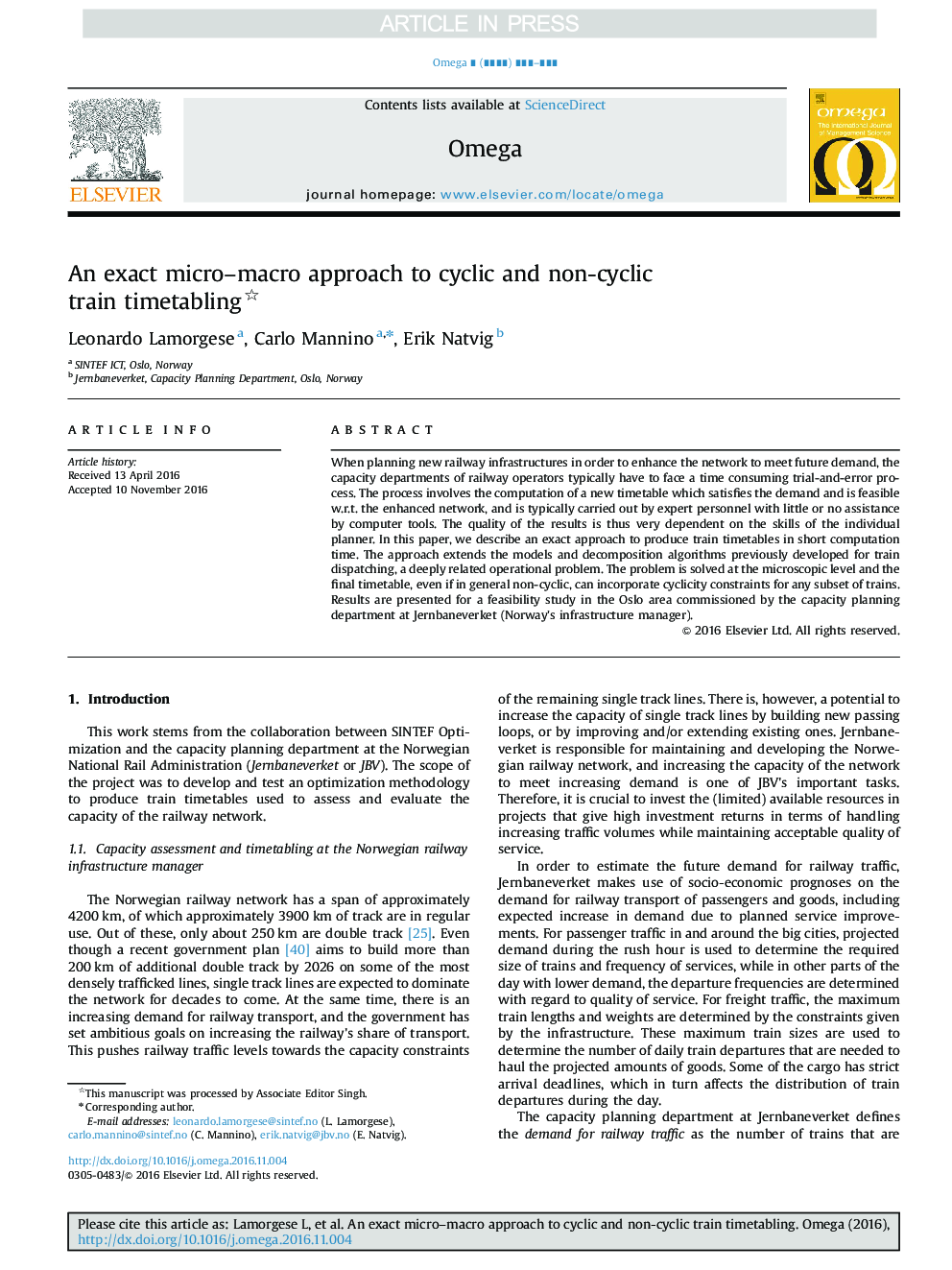| Article ID | Journal | Published Year | Pages | File Type |
|---|---|---|---|---|
| 5111699 | Omega | 2017 | 12 Pages |
Abstract
When planning new railway infrastructures in order to enhance the network to meet future demand, the capacity departments of railway operators typically have to face a time consuming trial-and-error process. The process involves the computation of a new timetable which satisfies the demand and is feasible w.r.t. the enhanced network, and is typically carried out by expert personnel with little or no assistance by computer tools. The quality of the results is thus very dependent on the skills of the individual planner. In this paper, we describe an exact approach to produce train timetables in short computation time. The approach extends the models and decomposition algorithms previously developed for train dispatching, a deeply related operational problem. The problem is solved at the microscopic level and the final timetable, even if in general non-cyclic, can incorporate cyclicity constraints for any subset of trains. Results are presented for a feasibility study in the Oslo area commissioned by the capacity planning department at Jernbaneverket (Norway׳s infrastructure manager).
Related Topics
Social Sciences and Humanities
Business, Management and Accounting
Strategy and Management
Authors
Leonardo Lamorgese, Carlo Mannino, Erik Natvig,
